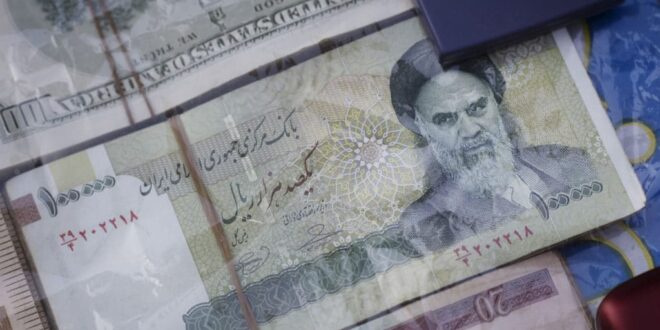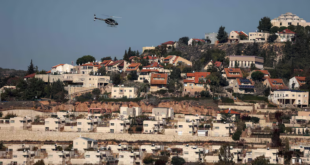On March 25, 2024, as Iranians celebrated Nowruz (Persian New Year), the black market rate of the Iranian rial plunged to a record low. Despite sanctions relief and infusions of cash, the Islamic Republic’s corruption, mismanagement, and the distortive effect of the Islamic Revolutionary Guard Corps make the currency’s continued slide look inevitable.
Multiple rates complicate foreign exchange in Iran. The Islamic Republic has parallel currency markets with different exchange rates: the official rate, the Foreign Exchange Management Integrated System (NIMA)rate that the Central Bank of Iran uses for exporters and importers, the unregulated or black market rate, the transfer (Sana) rate, among others. Prices vary across these markets. For example, on March 28, 2024, the official exchange rate for the U.S. dollar was 42,000 rials, the NIMA rate was 405,527 rials, and the black market rate was 616,580. The disparity among these rates encourages cronyism as individuals and institutions profit by purchasing at the lowest rate in one market and selling in another.
The dollar appreciated 38 percent against the rial in 2022 in the black market and an additional 23 percent in 2023. Over the first three months of 2024, the dollar has already appreciated 22 percent in the unregulated market. The rial’s plunge comes despite favorable tailwinds. Since 2021, lax sanctions enforcement and sanctions waivers have allowed Tehran greater access to its hard currency reserve. Nevertheless, from the beginning of 2021 until today, the U.S. dollar has appreciated 140 percent against the rial. Meanwhile, the price of the U.S. dollar in the NIMA market rose 16 percent in 2022, 37 percent in 2023, and, during the first quarter of 2024 alone, 10 percent. The 52 percent gap between the NIMA and black market rates is unsustainable as investors are unwilling to write off half the value of their investment.
Three factors determine the future of Iran’s rial. The first is the Central Bank of Iran. Should it expand hard currency to stabilize the exchange rate or allow market forces to dictate prices? The second is the outcome of the 2024 U.S. presidential election and the possibility that a Republican victory would mean reinstatement of the maximum-pressure campaign. The third is the dynamics surrounding Iran’s own presidential election in June 2025.
Iran’s 1979 Islamic Revolution was not only religious but also economic. Revolutionary leader Ayatollah Khomeini’s ideology infused Shi’ism with socialism. Throughout most of the Islamic Republic’s forty-five-year existence, the state-centered economy has reigned supreme; there is little likelihood that the regime will allow market forces alone to determine the rial’s value. The Islamic Revolutionary Guard Corps’ self-interest and aversion to the competition will likely derail the central bank’s ambition to stabilize foreign exchange rate fluctuations by encouraging foreign investments and trade.
The Biden administration’s track record suggests little willingness to pressure Tehran during an election year by enforcing current sanctions. However, over the next few months, the threat of U.S. recommitment to maximum pressure would increase dollar demand in the Iranian market and erode the rial’s value. The last time the U.S. dollar depreciated against the rial across an entire year was in 2013, as President Mahmoud Ahmadinejad’s term ended. Iranian brinkmanship over its nuclear enrichment, as well as its terror sponsorship, make official lifting of sanctions almost impossible, suggesting the rial’s slide will continue.
While Iranian elections tend not to deny incumbent presidents a second term, jockeying to succeed the supreme leader could tempt President Ebrahim Raisi’s rivals to use a campaign to undermine Raisi or advance their own future prospects. While the election might lead Raisi to tap foreign reserves to prop up the rial, it is unclear how long he could do so. After all, if he had an easy solution to Iran’s currency crisis, he would already have implemented it. Mudslinging, meanwhile, would also undermine confidence.
Iran’s economic crisis has been a central theme in the grievances of protestors. The widespread 2017 protests were indicative of this trend as Iranians took to the streets to voice discontent with Iran’s sputtering economy and rampant inflation. This pattern persisted into 2018 after soaring food prices and a new budget law triggered a wave of civic unrest across the country. Most notably, the 2019 nationwide uprisings showcased the profound impact of the declining economy on ordinary people, as security forces killed some 1,500 Iranians who protested the sharp increase in fuel prices. In all these cases, economic grievances triggered protests that quickly morphed into anti-regime demonstrations that demanded the fall of the regime.
Despite their policy disputes over Iran, both Democrats and Republicans want to support the Iranian people. Perhaps, then, it is time Congress finds a consensus to use this vulnerability to assist the Iranian people by maintaining pressure on the rial as a mechanism in order to encourage Iranians to end the regime that uses access to hard currency to fund its repression.
 Eurasia Press & News
Eurasia Press & News

